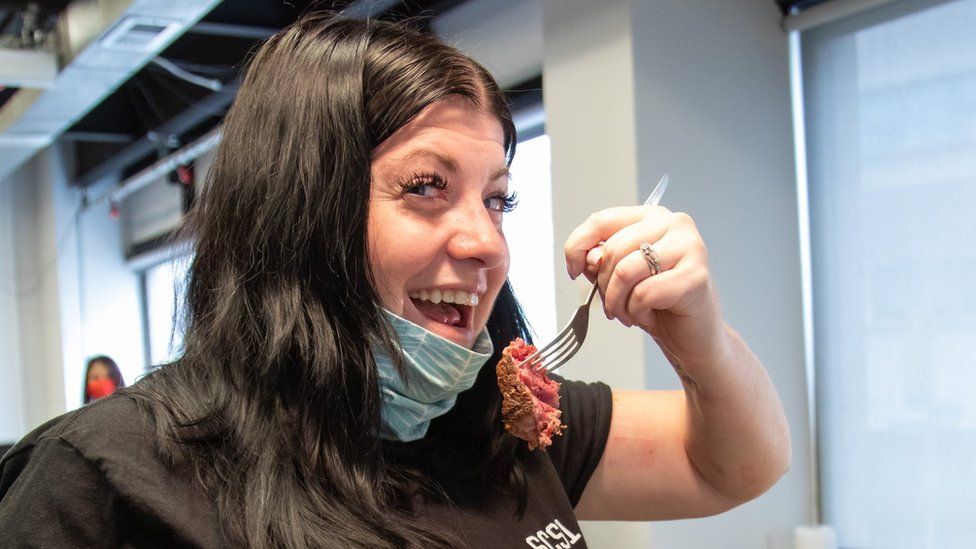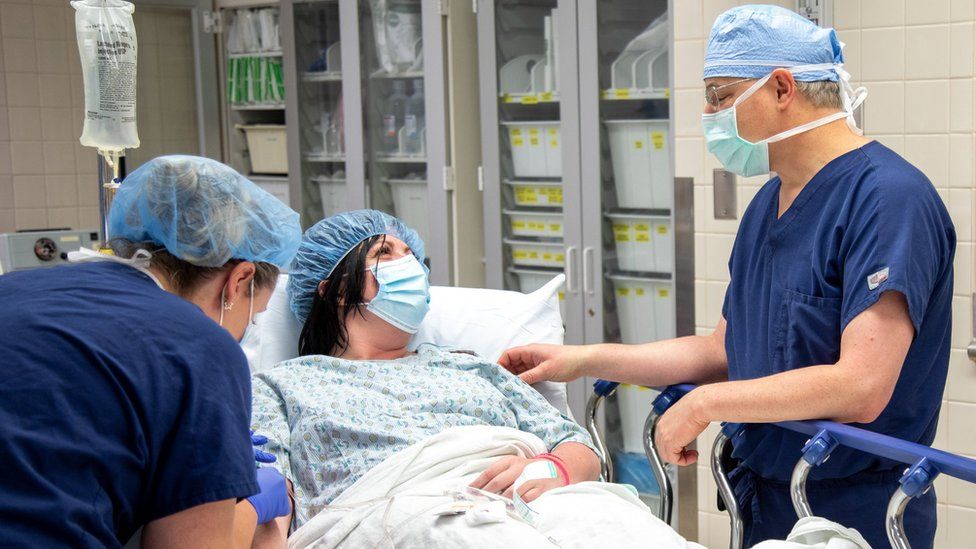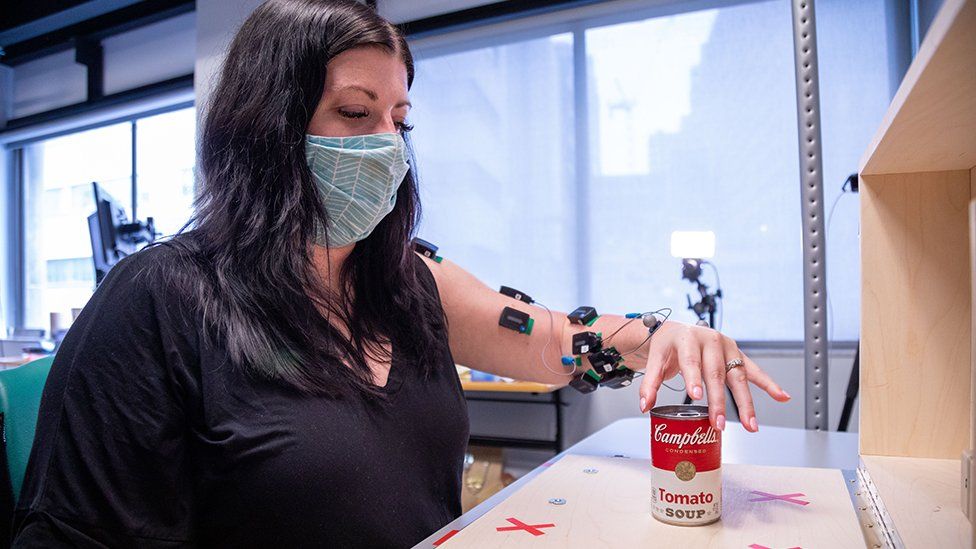
Electrically stimulating the spinal cord instantly restores some ability to control the arm and hands in people who have had a stroke, US researchers say.
Heather Rendulic, from Pittsburgh, was able to cut and eat a steak by herself for the first time in nine years.
She said the technology was "nothing short of amazing".
The University of Pittsburgh team say more research is needed to see who can benefit, as the spinal implants have been tested in only two people.
Strokes disrupt the blood supply in the brain and lead to brain cells dying. This often leaves those that survive with long-term health problems.
People can retain the desire and intent to move but the instructions from the brain become so weak nothing happens.
Never recovered
When Heather was in her early 20s, she was diagnosed with a cluster of abnormal blood vessels in her brain - a cavernous angioma. It bled multiple times and led to a large stroke. One morning, she woke up unable to move the left side of her body.
In the nine years that followed, Heather learned to walk again but control of her left arm and hand never recovered - "something I struggle with every day". Even the simplest tasks, such as putting on shoes, became a challenge.
Before having the procedure, Heather's goal was "to be able to cut a piece of steak", as she relied on her husband to do it.

Heather had an implant surgically placed to stimulate her nerves
Heather had electrodes implanted in her neck so parts of her spinal cord could be stimulated.
The nervous system communicates with electricity - but after Heather's stroke, the electrical signals travelling from her brain were too weak to activate the nerves controlling her arm and hand movements.
Stimulation excites the nerves so they are already itching to respond - and now, those weak messages are enough to trigger movement.
It worked on the first day and Heather was able to open and close her hand for the first time in nine years.
'Started crying'
"Nobody was expecting it would work that fast," Dr Marco Capogrosso, from the University of Pittsburgh, told me.
"She started crying, the family was there and they started crying and then all of us started crying, so it was a very, very emotional moment."
Heather was "moving my arm and hand in ways I haven't for almost a decade".
And she got her steak.
 IMAGE SOURCE,TIM BETLER, UNIVERSITY OF PITTSBURGH
IMAGE SOURCE,TIM BETLER, UNIVERSITY OF PITTSBURGH
The details, published in the journal Nature Medicine, showed the device worked in Heather and one other volunteer. However, the experiment was designed to last for only a month - after which, the electrodes were removed and the beneficial stimulation was gone.
But the researchers say the results give a glimpse into the future, where implants could make meaningful differences to people's lives.
Dr Marco Capogrosso told me: "Our patients recover but they don't become completely normal.
"They can recover a lot of independence and a lot of quality of life, just because they can use their arm and hand now, even though they probably cannot play the piano."
The team believe the field could advance quickly as they are using technologies already approved for managing severe pain.
But for now, it will take more clinical trials to work out who benefits and how to move the equipment from the laboratory to the home.
Dr Rubina Ahmed from the Stroke Association said: "The research is still in the early stages and surgical implants may not be suitable for everyone. Non-invasive stimulation methods are also being tested which could be used by a wider range of people."
From BBC
